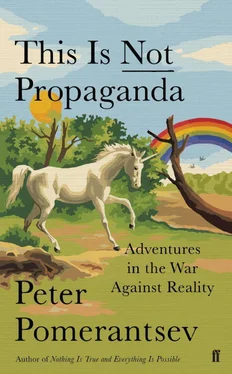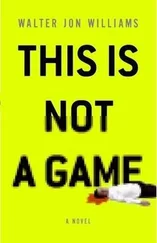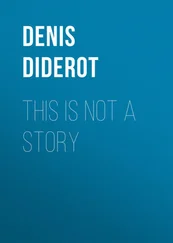Alberto is a great admirer of Srdja Popović. He’s never been to any of the workshops, but he and his friends would pore over Srdja’s manuals as they planned their own protests, all united in their hate of the casual police beatings, drug hits, stuffed ballot boxes and rigged deals which enabled the awful chasm between the black-glass-fronted boutiques and security fences up in posh Polanco and the toothless, impoverished people sleeping in piles in the baroque squares, a difference not so much between rich and poor as between different eras.
Alberto and his friends started with pranks to provoke the police: after students were beaten by police, they went on silent marches and staged lie-ins where they stretched out supine on the street, blocking the road. Protest had started off as something personal for Alberto. In 2009 his family, along with other workers, had gone on hunger strike to save the Central Light and Power Company in his home town of Necaxa. Alberto, already a well-known blogger, helped amplify the protest to the nation. The workers won.
In the second decade of the twenty-first century, protest became a way of connecting to a greater world. This was the height of the Internet-powered ‘third wave of democratisation’, and Alberto was constantly in touch with partner movements in Spain and the US, who were in turn talking to others in Turkey and the Middle East. Alberto was simultaneously organising lie-ins in Mexico and pushing hashtags in Barcelona.
Dr Marcos Bastos, a Brazilian academic at London’s City University, analysed twenty million tweets by these movements between 2009 and 2015, conducting twenty-one interviews, and described them as powered by ‘rooted cosmopolitans’. A young woman unable to leave her home in Scotland as she had to look after her ageing relatives, for example, would watch live streams of protests in Istanbul and Cairo and guide protesters on how to avoid armed police. Discrete interests were pooled into something broader. A Swedish ‘serial activist’ told Bastos: ‘I don’t fight for class struggle, feminism, ecology or anarchism. My political reference is my mother. I need to persuade her. I’m fighting to reach out to the 99 per cent: public values like justice and freedom instead of private values.’ [7] Mercea, D. and M. T. Bastos, ‘Being a Serial Transnational Activist’, Journal of Computer-Mediated Communication, 21(2), 140–55 (2016); http://openaccess.city.ac.uk/13151/7/Being%20a%20serial%20transnational%20activist_prepublication.pdf .
But for all the excitement of the rooted cosmopolitans, Alberto found himself frustrated with the hit-and-miss nature of protests. Some caught on; others were a waste of time. At their meetings his co-organisers would blame the weather, the government… Their approach, as advocated by Srdja, was to gather different groups, establish the ‘lowest common denominator’ of mutual interests, then spread the message to what they hoped would be the right people. But how would they know which themes to choose? The way they approached it seemed unscientific, and Alberto sensed that rational political interests were only part of what was needed to make a protest work. People wanted to be part of something emotionally powerful. That’s why they came to some protests and not to others. He sensed this instinctively, but he wanted to use data to turn his hunch into something practical.
Alberto started looking at Google searches in the periods leading up to protests. He found that interest in certain topics – gas prices, police shootings – would start to be visible online months before they became articulated reasons for protest. That meant one could anticipate the issues that would unite people in advance.
Then Alberto began to look at how social media messages travelled between people during successful protests. Protests grew as the communication between users increased online, forming a dense lattice of interconnections – what computer scientists know as ‘capillarity’. Alberto read the tens of thousands of messages to see which ones generated the most connections. He went through every line individually, a painstaking process that took months. He found that every wave of protests had a certain amount of words that made the lattice of communication grow thicker, words that worked almost like magical magnets powering capillarity. This is what Alberto meant by ‘love’: the increasing interconnections that people looked for in a movement.
He realised that if he knew in advance which subjects brought people together, and which words strengthened the interconnections, he would be able to ‘summon up’ protests.
To show me, he opened up a laptop. In the centre of the screen was a vibrating ball of dots with lines in between, with new lines joining in between the dots all the time, the whole thing quivering, growing, thickening. This was a real-time representation of online conversation among protesters during Mexico’s biggest-ever demonstrations in 2014, when hundreds of thousands came onto the streets after forty-three students were murdered by narcos and the government did nothing to investigate. Each dot was a person, each line a conversation between them, and the links grew with the mention of the words powering the movement.
As Alberto showed me the graphic representation, an actual march went by outside the cafe we were sitting in. This was how I’d always seen protests: images of passionate people, slogans, speeches, stories, history. Alberto saw them differently, as something more abstract: little throbbing lines and dots, individual words emanating power outside the linear logic of full sentences. [8] ‘Liberación de datasets sobre #YaMeCansé y Ayotzinapa’; https://loquesigue.tv/liberacion-de-datasets-sobre-yamecanse-y-ayotzinapa/ .
From the top of the screen something new emerged: many darting little bat-like shapes. These did not connect with each other; instead, they descended separately on the ball, pecking away at it, pulling it apart. ‘These’, said Alberto, ‘are the bots and cyborgs.’
The protesters weren’t the only tech-savvy actors around. Already back in the elections of 2012 Mexico had become famous in computer science circles for the amount of automated social media personas – basically computer programs pretending to be people – used by the eventual winner, Enrique Peña Nieto. Known as ‘peñabots’, these were Twitter accounts that could be produced by the thousands and then programmed to push out pro-Peña Nieto messages. ‘Bots’ were usually pretty stupid: they just repeated the same message over and over. ‘Cyborgs’ were a step up: bots would push the original line, but when someone took the bait and interacted with it, a real human operator – a cyborg – would step in and guide the conversation. [9] Finley, Klint, ‘Pro-Government Twitter Bots Try to Hush Mexican Activists’, Wired, 23 August 2015; https://www.wired.com/2015/08/pro-government-twitter-bots-try-hush-mexican-activists/ .
One time a cyborg had come to see Alberto. She was a student herself. PR companies close to the government would pay ‘bot herders’ like her to run over a hundred fake personas on social media. She said she felt guilty. But the pay was solid.
With the protests swelling, government bots and cyborgs were now repurposed to undermine them. Protesters suddenly found themselves being smeared as being paid by the opposition, as being anti-patriotic – all sorts of lies. Instinctively protesters started to respond, defending themselves online against their accusers. On Alberto’s screen you could see the consequences. As the little bat-shaped bots pecked at the ball, the little nodes representing protesters would stop interacting with each other and instead turn outwards to engage with the attackers, and as they did so the thick lattice became thinner and the ball started to break apart into a shapeless, twitching mess.
Читать дальше












